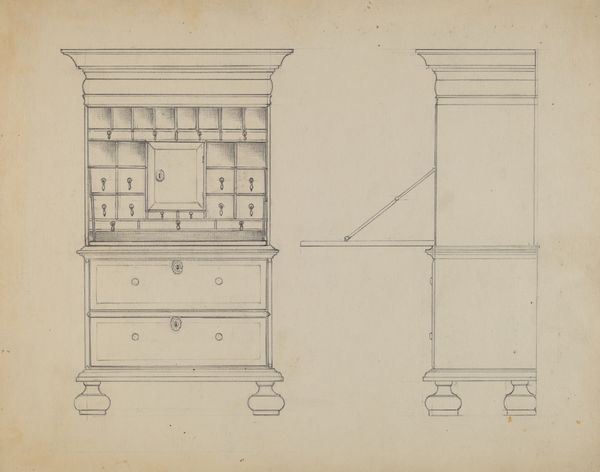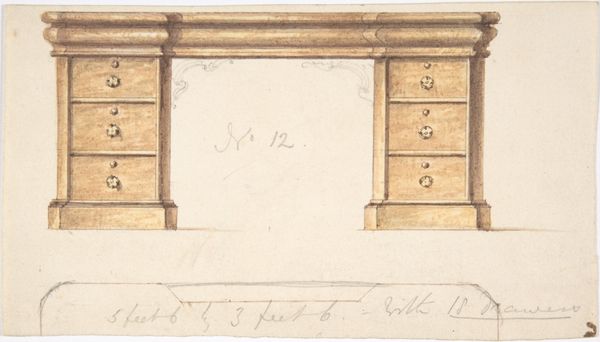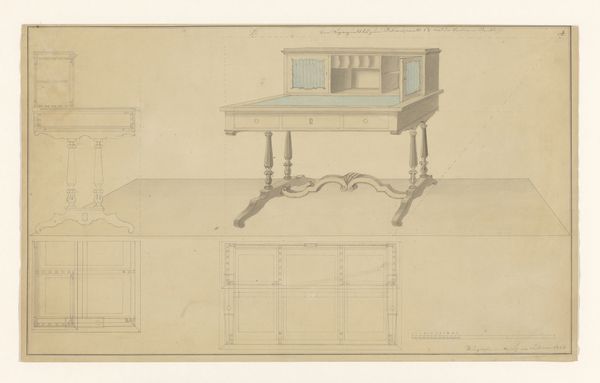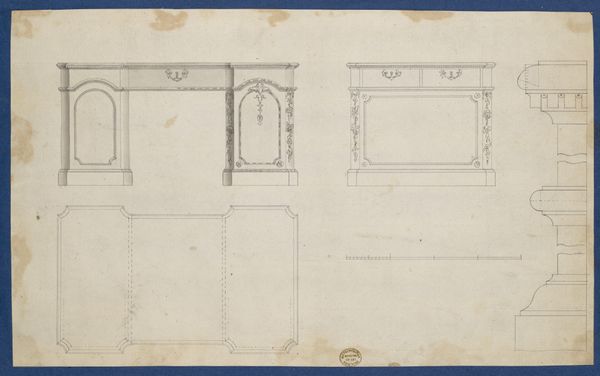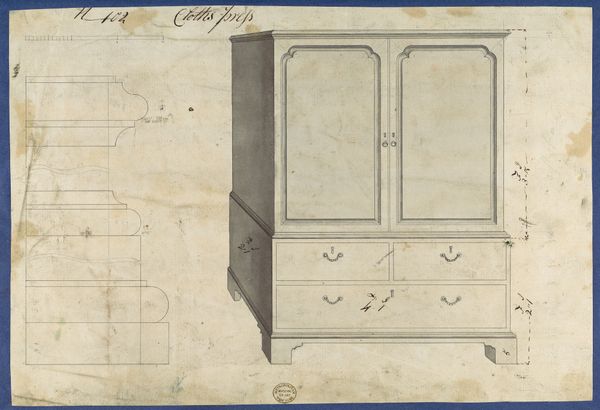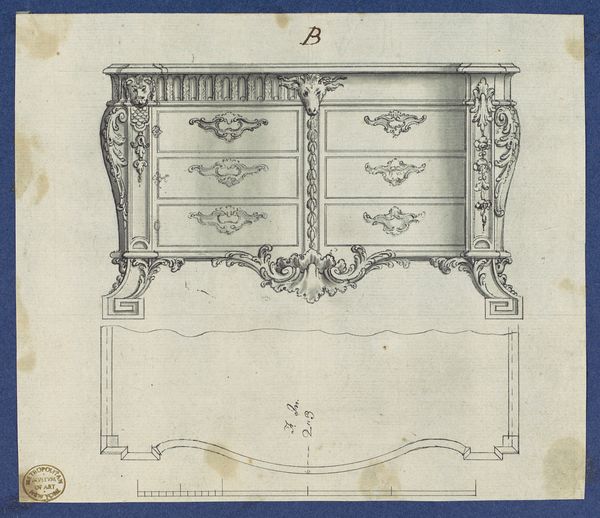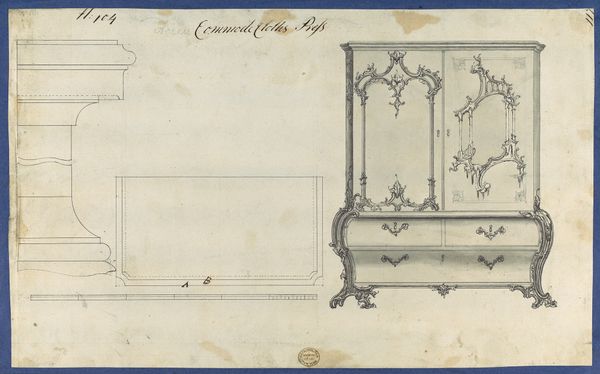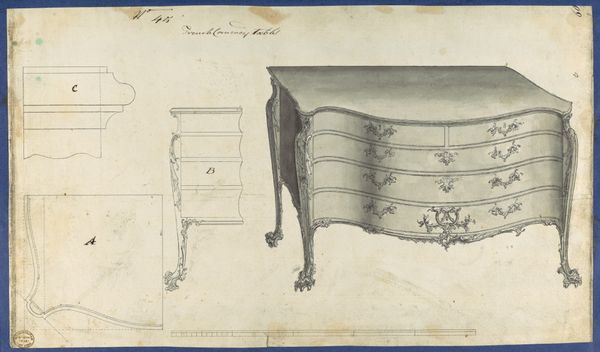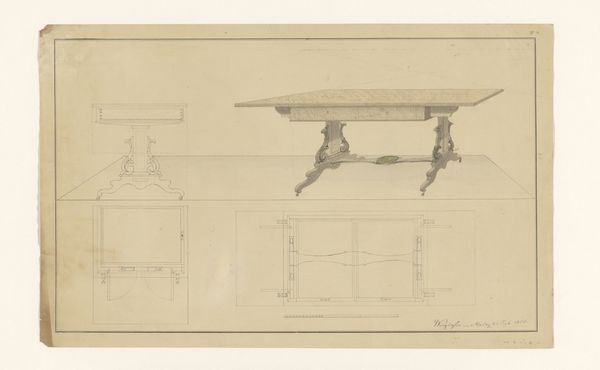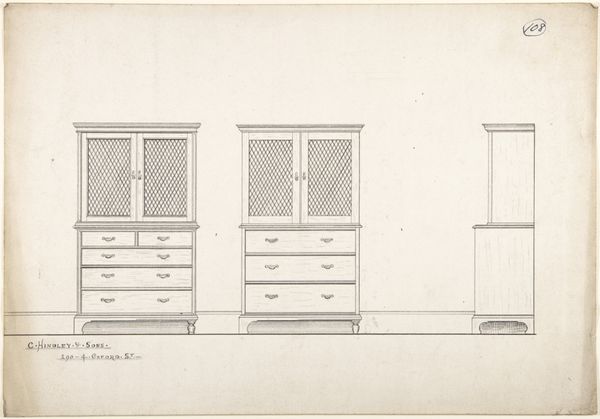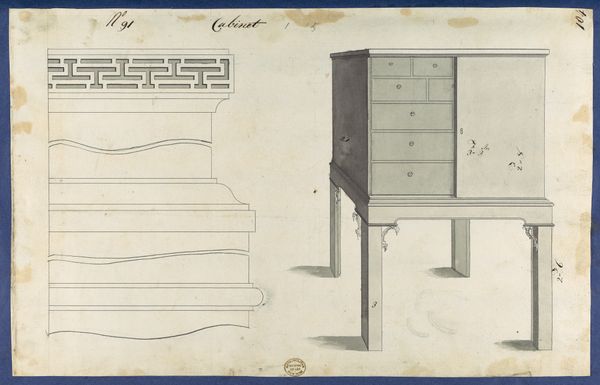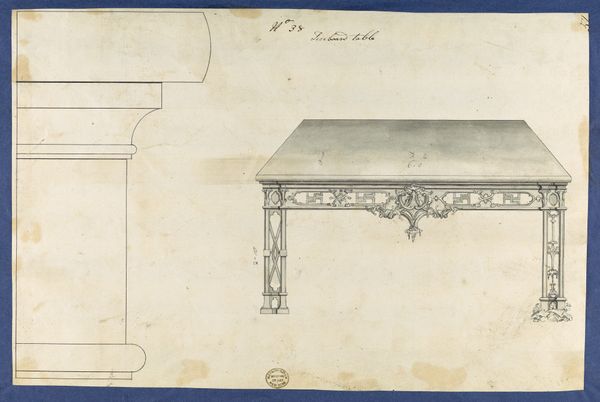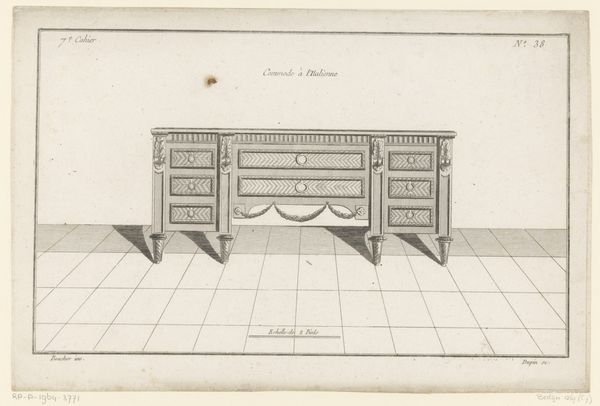
Chest of Drawers, from Chippendale Drawings, Vol. II 1753
0:00
0:00
drawing, print, etching, paper
#
drawing
#
neoclassicism
# print
#
etching
#
furniture
#
paper
#
form
#
line
#
academic-art
#
decorative-art
Dimensions: sheet: 8 5/8 x 13 3/8 in. (21.9 x 34.1 cm)
Copyright: Public Domain
Curator: Today, we are examining “Chest of Drawers, from Chippendale Drawings, Vol. II,” an etching by Thomas Chippendale dating to 1753. Editor: It's surprisingly detailed, almost architectural in its precision. The lines are clean, the symmetry impeccable. There’s an understated elegance, even in its monochromatic presentation. Curator: Indeed. Chippendale was known for blending various styles. In this piece, we see the emerging Neoclassical influence, with a focus on balanced proportions and a revival of classical motifs. Consider the delicate rendering of the cabriole legs and the geometrical intricacies within the glazed cabinet door. It’s all about line. Editor: Yes, the use of line is paramount. It's a showcase of form, prioritizing function but undeniably artistic in its approach. It reflects, I think, the growing affluence of the merchant class, looking for refinement without ostentation. Chippendale met their needs. Curator: Precisely. Furniture in this era wasn't merely functional; it reflected social aspirations and status. The rise of consumer culture saw the reproduction of pattern books, like Chippendale's, leading to wider access to fashionable designs, allowing the middle classes to emulate aristocratic tastes, with simplified detailing, of course. Editor: And there's an aspirational element inherent in a drawing like this. It presents not just the object itself, but also a vision of sophisticated domesticity, influencing taste and creating desires. You have to remember these were originally purchased, often by cabinetmakers, to instruct them. Curator: Furthermore, the format – the print – itself played a crucial role in disseminating aesthetic ideals and establishing a sort of design vernacular. Chippendale became a brand, influencing cabinet makers throughout Britain and beyond. Editor: The formal qualities, therefore, speak volumes about broader shifts in 18th-century society. What first seemed like just a drawing of furniture actually speaks volumes of status and societal changes, quite intriguing. Curator: Precisely, it is this synthesis of visual structure and historical context that makes examining these drawings so compelling. The detail and form give clues of the world for which it was designed.
Comments
No comments
Be the first to comment and join the conversation on the ultimate creative platform.

